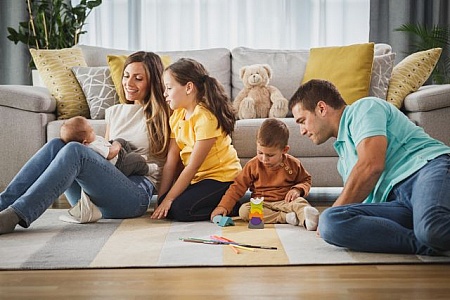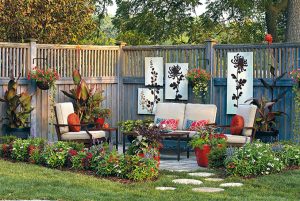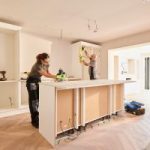Home wellness encompasses the design and arrangement of living spaces to promote physical health, mental clarity, and emotional well-being. In recent years, there has been a growing recognition of the profound impact that our built environments have on our overall wellness. This article explores the principles, strategies, and benefits of designing homes that prioritize wellness, integrating scientific insights with practical design solutions.
Understanding Home Wellness
Home wellness goes beyond aesthetics and functionality; it involves creating environments that support and enhance holistic well-being. Key elements of home wellness include:
- Physical Health: Designing spaces that encourage physical activity, healthy eating habits, and restorative sleep.
- Mental Clarity: Incorporating elements that reduce stress, promote relaxation, and foster mental clarity.
- Emotional Well-Being: Creating nurturing environments that support emotional expression, connection with nature, and a sense of security.
Principles of Home Wellness Design
Designing for home wellness requires a thoughtful approach that considers both the physical and psychological needs of occupants:
- Natural Light: Maximizing natural light exposure to regulate circadian rhythms, enhance mood, and reduce reliance on artificial lighting.
- Indoor Air Quality: Using low-VOC (volatile organic compound) materials, proper ventilation systems, and indoor plants to improve air quality and respiratory health.
- Biophilic Design: Incorporating elements of nature, such as indoor plants, natural materials, and views of greenery, to reduce stress and promote well-being.
- Ergonomics: Designing furniture and layouts that support proper posture, comfort, and ease of movement to reduce physical strain.
- Sound Control: Minimizing noise pollution through strategic placement of sound-absorbing materials, insulation, and consideration of household activities.
Integrating Technology for Wellness
Advancements in technology offer opportunities to enhance home wellness through innovative solutions:
- Smart Home Devices: Integration of smart thermostats, lighting systems, and air quality monitors that optimize environmental conditions and energy efficiency.
- Wellness Apps: Mobile applications for mindfulness, fitness tracking, and sleep monitoring that support healthy routines and behavior modification.
- Home Automation: Automated systems for controlling lighting, window treatments, and temperature to create personalized, stress-free environments.
Creating Zones for Wellness
Effective home wellness design often involves creating distinct zones within the home that cater to different aspects of well-being:
- Sleep Sanctuary: Designing bedrooms that promote restful sleep with comfortable bedding, blackout curtains, and a calming color palette.
- Fitness and Movement: Dedicate space for exercise equipment, yoga mats, or a designated workout area to encourage physical activity.
- Relaxation Nooks: Carve out cozy corners with comfortable seating, soft lighting, and serene decor for relaxation, reading, or meditation.
- Nutrition Hub: Designing a well-equipped kitchen with ample storage for fresh ingredients and ergonomic layouts that facilitate healthy cooking.
Benefits of Home Wellness
Designing homes with wellness in mind offers numerous benefits for occupants:
- Improved Physical Health: Enhanced indoor air quality, access to natural light, and spaces that promote physical activity contribute to better overall health and vitality.
- Enhanced Mental Well-Being: Reduction in stress levels, improved concentration, and a sense of calm foster mental clarity and emotional resilience.
- Increased Productivity: Well-designed home offices or workspaces that minimize distractions and support ergonomic principles can enhance productivity and creativity.
- Better Sleep Quality: Bedrooms optimized for sleep hygiene contribute to restorative sleep patterns and overall well-being.
Challenges and Considerations
Achieving home wellness involves addressing challenges such as budget constraints, space limitations, and conflicting design preferences. Key considerations include:
- Budget Planning: Balancing wellness priorities with financial constraints by prioritizing investments that have the greatest impact on well-being.
- Space Optimization: Maximizing the use of available space through multifunctional furniture, smart storage solutions, and efficient layouts.
- Family Dynamics: Designing spaces that cater to the diverse needs and preferences of family members while promoting collective well-being.
- Maintenance and Sustainability: Incorporating durable materials, energy-efficient systems, and low-maintenance designs that support long-term wellness goals.
Trends in Home Wellness
Emerging trends in home wellness reflect a growing emphasis on sustainability, personalization, and technology integration:
- Holistic Design Solutions: Comprehensive approaches that address physical, mental, and emotional well-being through integrated design strategies.
- Adaptive Living Spaces: Flexible designs that accommodate changing needs and lifestyles, such as aging in place or multi-generational living arrangements.
- Wellness Retreats: Designing dedicated spaces, such as spa-like bathrooms or meditation rooms, that serve as sanctuaries for relaxation and rejuvenation.
- Virtual Wellness: Online platforms and digital tools that offer virtual consultations with wellness experts, fitness classes, and mindfulness sessions.
The Future of Home Wellness
Looking ahead, the future of home wellness is shaped by advancements in sustainable practices, biophilic design principles, and personalized technologies. Trends such as modular construction, prefabricated wellness spaces, and the integration of AI-driven wellness solutions are expected to transform residential design.
Conclusion
In conclusion, home wellness represents a paradigm shift in residential design, placing human well-being at the forefront of architectural and interior considerations. By embracing principles of natural light, indoor air quality, biophilic design, and technological innovation, homeowners can create environments that support physical health, mental clarity, and emotional well-being.
As we continue to navigate the complexities of modern living, the importance of designing homes that nurture and sustain wellness cannot be overstated. By investing in thoughtful design, informed decision-making, and a commitment to creating spaces that inspire and rejuvenate, we can cultivate environments that promote happiness, productivity, and overall quality of life for generations to come.










